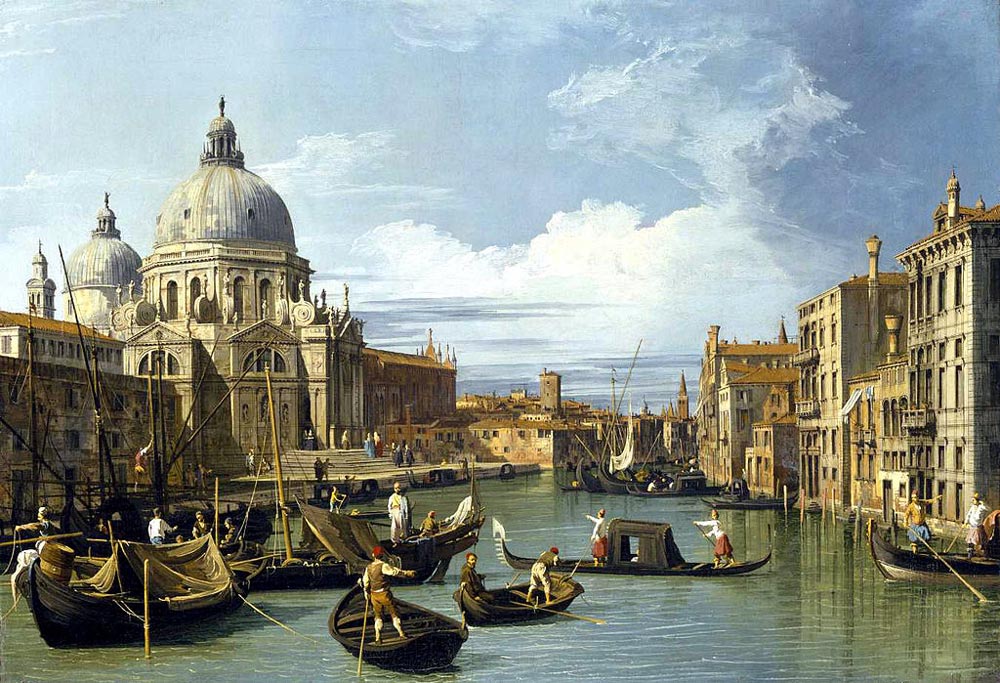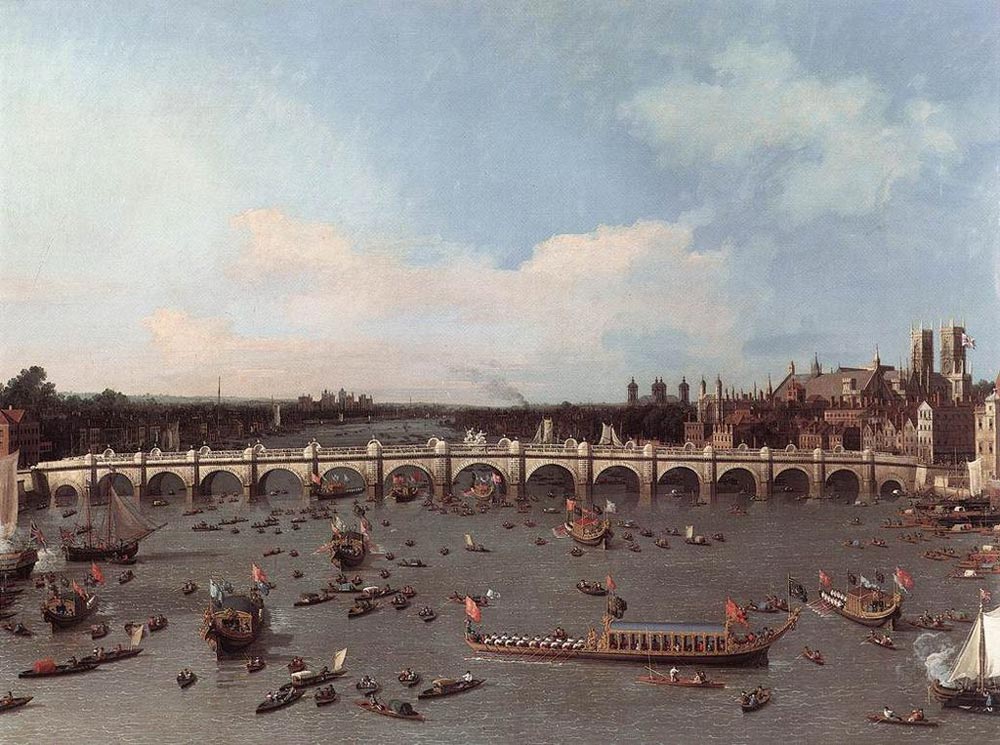| Canaletto | |
|---|---|
 |
|
| Born | Giovanni Antonio Canal Oct. 28, 1697 Venice |
| Died | Apr. 19, 1768 (at age 70) Venice |
| Nationality | Venetian |
| Education | Luca Carlevaris |
| Field | Landscape art, etching |
| World | View Complete Works |
He was born Giovanni Antonio Canal in 1697, but today he is known to the world as Canaletto. He became one of the most influential landscape painters of his time, and his art has withstood the test of time.
Born in Venice, Canaletto was surrounded by subject matter that was magnificent – the stunning classical architecture and the watery canals of one of the world’s most picturesque cities: Venice.
Destined for Art
Canaletto was destined to be a painter. His father, Bernardo Canal, was a painter, as was Canaletto’s brother and nephew. So Canaletto certainly had the family support, but he combined that with intensive study and hard work to surpass some of the greatest, established artists he studied under.
Canaletto works led to an important offshoot of painting – the making of prints and etchings. These would become a significant contribution to his income over the course of his career.
Early Career
Canaletto studied in Rome as a young man, and returned to Venice in 1719. It was at this time that he adopted landscape painting as his primary venue, at first matching the techniques of his instructors, but eventually creating his own unique topographical style. His first known signed work is dated to 1723, a work titled Architectural Capriccio.
 A significant factor in understanding the work of Canaletto lies in comparing the work he did outdoors to those landscapes he produced inside a studio. The works he completed outdoors are characterized by sharper, more detailed depictions of people in the city setting, while those produced inside the studio tend to only suggest human form with blurred representations of people.
A significant factor in understanding the work of Canaletto lies in comparing the work he did outdoors to those landscapes he produced inside a studio. The works he completed outdoors are characterized by sharper, more detailed depictions of people in the city setting, while those produced inside the studio tend to only suggest human form with blurred representations of people.
Another factor which lifts his outdoor creations to a higher level was his use of light. It was said that one could always “see the sun” in Canaletto’s work.
His Later Years
Most art historians agree that his earlier works are superior to those he produced later in life. The early years were strictly representational – like sharp photo images of city landscapes – whereas in his later years he began to adopt a more avant-garde style, with blurred and impressionistic images.
There is some debate over which body of work – early or late – are superior, but often the quality of art is a matter of taste and in the eye of the beholder.
Years in England
Sales of Canaletto’s paintings became popular in England in the mid-1700s, and this led him to move there in 1746. There had also been strife in Venice created by the War of the Austrian Succession. He continued to paint city scenes and urban landscapes, only now his subject was London. He also painted English castles, bridges, houses and various other forms of architecture.
The 10 years or so he spent in London was a period of marked decline in the quality of his work, however. He naturally was expected to paint urban scenes as he had in Venice, but the gray, austere avenues of often dank and dark London seemed to throw Canaletto off.
 Venice, by contrast, is a climate dominated by bright blue skies, sparkling water and sun reflecting of the dominant gold-brick architecture of that city – and of course the watery canals and streets are unique in Europe, if not the world. London and Venice are both great cities, but evoke a different sense of soul and place. It should be noted, however, that two of his best works may have been completed in England – paintings of Westminster Bridge, 1746, and Northumberland House, 1752.
Venice, by contrast, is a climate dominated by bright blue skies, sparkling water and sun reflecting of the dominant gold-brick architecture of that city – and of course the watery canals and streets are unique in Europe, if not the world. London and Venice are both great cities, but evoke a different sense of soul and place. It should be noted, however, that two of his best works may have been completed in England – paintings of Westminster Bridge, 1746, and Northumberland House, 1752.
Return to Venice
Canaletto returned to his beloved Venice in 1755. It might be safe to say he never regained the style and brilliance of his pre-English career, but it could also be argued that Canaletto was probably tired of painting the “same old” and so experimented with new styles.
Others claim his skills had declined or that he had become less interested – his works became increasing imprecise.
Still, he was accepted to a seat in the prestigious Venetian Academy in 1763, which solidified his reputation as one of the greatest artists of his time. He continued to paint until he died in 1768.
Today Canaletto’s paintings can be found all around the world. Any one of them might be considered priceless. In a recent case, the auction house Sotheby’s sold one of his works, View of the Grand Canal from Palazzo, in 2005 – it commanded a price of 18.6 million British pounds, or about 28.6 million dollars.